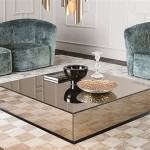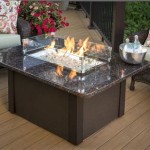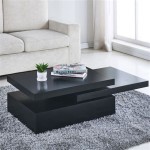How to Paint a Dining Table Distressed White
Achieving a distressed white finish on a dining table is a popular method for adding character and a vintage aesthetic to a dining space. This technique, when executed properly, can transform a tired or outdated table into a statement piece that complements a variety of interior design styles, from farmhouse to shabby chic. The process involves carefully layering paint, selectively removing some areas to reveal underlying colors or wood, and then sealing the finished surface for protection.
The success of this project relies heavily on meticulous preparation, appropriate material selection, and a well-defined execution strategy. Rushing any stage of the process can compromise the final appearance and durability of the table. This article provides a detailed, step-by-step guide on how to paint a dining table distressed white, ensuring a professional and long-lasting result.
Key Point 1: Preparation is Paramount
The initial phase of any furniture refinishing project is preparation. This stage is crucial as it directly impacts the adhesion of the paint and the overall appearance of the distressed finish. Neglecting proper preparation can lead to peeling paint, uneven textures, and a generally unprofessional outcome.
First, the dining table must be thoroughly cleaned. Use a degreasing cleaner to remove any grease, wax, or dirt that may have accumulated on the surface. These contaminants can prevent the paint from bonding properly, leading to future problems. After cleaning, rinse the table with clean water and allow it to dry completely. A dry surface is essential for subsequent steps.
Next, inspect the table for any existing damage, such as chips, scratches, or loose veneer. Repair any imperfections before proceeding with the painting process. Wood filler can be used to fill in chips and scratches, and loose veneer should be carefully re-glued. Allow the filler and glue to dry completely according to the manufacturer's instructions.
Sanding is a critical step in preparing the surface for paint. Use a medium-grit sandpaper (around 120-grit) to scuff the existing finish. This creates a slightly rough surface that allows the primer and paint to adhere more effectively. Sand evenly, paying attention to edges and corners. Once the entire surface has been sanded, use a fine-grit sandpaper (around 220-grit) to smooth out any rough spots and create a smooth, even surface. Remove all sanding dust with a tack cloth or a damp cloth. The surface must be clean and dust-free before moving on to the next step.
If the existing finish is particularly glossy or slick, consider using a liquid deglosser instead of sanding. A deglosser chemically etches the surface, creating a better bond for the paint. Follow the manufacturer's instructions carefully when using a deglosser, as some products can be harmful if not handled properly. Always work in a well-ventilated area and wear appropriate protective gear.
Protection of the surrounding work area is equally important. Lay down drop cloths to protect flooring or furniture from paint splatters. Use painter's tape to mask off any areas that should not be painted, such as hardware or sections of the table that you want to leave unpainted.
Key Point 2: Painting Techniques and Material Selection
Choosing the right paint and applying it correctly are essential for achieving the desired distressed white finish. Selecting appropriate materials and mastering painting techniques will dictate the quality and longevity of the finished piece.
Primer is the first layer of paint to be applied. Choose a high-quality primer that is designed for use on furniture. Primer helps to create a uniform surface for the topcoat, improves adhesion, and can even block stains from bleeding through the paint. Apply the primer in thin, even coats using a brush, roller, or sprayer. If using a brush, choose a brush with synthetic bristles to minimize brushstrokes. If using a roller, choose a foam roller for a smooth finish. If using a sprayer, thin the primer according to the manufacturer's instructions and apply in several light coats to avoid drips and runs.
Allow the primer to dry completely according to the manufacturer's instructions before proceeding to the next step. Lightly sand the primed surface with fine-grit sandpaper (around 320-grit) to remove any imperfections and create an even smoother surface. Remove all sanding dust with a tack cloth or a damp cloth.
Selecting the right white paint is crucial for achieving the desired aesthetic. Options include chalk paint, milk paint, latex paint, and acrylic paint. Chalk paint is a popular choice for distressed finishes because it adheres well to most surfaces, requires minimal prep work, and creates a matte finish that is easy to distress. Milk paint is another good option for a vintage look, as it creates a slightly chippy finish and has a natural, eco-friendly composition. Latex and acrylic paints are more durable and easier to clean but may require more prep work to ensure proper adhesion.
Apply the white paint in thin, even coats using the same method as with the primer. Depending on the type of paint used, multiple coats may be necessary to achieve full coverage. Allow each coat to dry completely before applying the next. Lightly sand between coats with fine-grit sandpaper to remove any imperfections and create a smooth, even surface.
Before applying the final white coat, you may want to consider adding a base coat in a different color. This base coat will be revealed when you distress the white paint, adding depth and character to the finished piece. Popular choices for base coats include gray, brown, black, or even a vibrant color for a more eclectic look. Apply the base coat in the same manner as the primer and white paint, allowing it to dry completely before proceeding.
Key Point 3: Distressing and Sealing
The distressing process is where the character and vintage appeal of the table are achieved. This involves selectively removing some of the white paint to reveal the underlying wood or base coat. Following this, sealing the table will protect the finish and ensure its longevity.
There are several methods for distressing paint, including sanding, using a wet cloth, and chipping. Sanding is the most common method and involves using sandpaper to remove paint from areas where natural wear and tear would occur, such as edges, corners, and around hardware. Use a medium-grit sandpaper (around 120-grit) to start, and then switch to a finer-grit sandpaper (around 220-grit) to blend the distressed areas into the surrounding paint. Be careful not to sand too much, as you want to create a subtle, aged look rather than completely removing the paint.
Using a wet cloth is a gentler method of distressing that is particularly effective with chalk paint or milk paint. Simply dampen a cloth with water and rub it over the painted surface to remove some of the paint. This method allows for more control and can create a soft, subtle distressed look.
Chipping involves using a putty knife or chisel to carefully chip away small pieces of paint. This method creates a more rustic, weathered look and is best suited for furniture with a lot of texture or detail. Be careful not to chip too much paint, as you want to create a natural, aged look rather than a haphazard, damaged look.
Once you are satisfied with the distressed look, remove all sanding dust with a tack cloth or a damp cloth. Inspect the table carefully and touch up any areas that need additional distressing or painting.
Sealing the distressed white finish is essential to protect the paint and prevent it from chipping or wearing away over time. Choose a sealant that is appropriate for the type of paint used. Options include wax, polyurethane, and varnish. Wax is a popular choice for chalk paint and milk paint, as it enhances the matte finish and provides a soft, smooth feel. Polyurethane and varnish are more durable and water-resistant, making them a good choice for furniture that will be used frequently or exposed to moisture.
Apply the sealant in thin, even coats using a brush, roller, or sprayer. Follow the manufacturer's instructions carefully, as some sealants require multiple coats or specific drying times. Allow the sealant to dry completely before using the table. Lightly sand the sealed surface with fine-grit sandpaper (around 320-grit) to remove any imperfections and create a smooth, even surface. Remove all sanding dust with a tack cloth or a damp cloth.
For a wax finish, apply the wax with a cloth or brush, working it into the surface in a circular motion. Allow the wax to dry for the recommended time, and then buff the surface with a clean cloth to create a smooth, lustrous finish. You may need to apply multiple coats of wax to achieve the desired level of protection and shine.
For polyurethane or varnish finishes, apply the sealant in thin, even coats, avoiding drips and runs. Allow each coat to dry completely before applying the next. Lightly sand between coats with fine-grit sandpaper to remove any imperfections and create a smooth, even surface. Remove all sanding dust with a tack cloth or a damp cloth.

Thrifty And Chic Diy Projects Home Decor

Thrifty And Chic Diy Projects Home Decor

Thrifty And Chic Diy Projects Home Decor

How To Distress Wood Furniture With Milk Paint And Wet Rag Sanding Simplicity In The South

Thrifty And Chic Diy Projects Home Decor

White Dining Table Makeover

Painting A Dining Room Set With Chalk Paint The Purple Painted Lady

Distressing With Chalk Paint Table And Chairs Makeover

The Beginner S Guide To Distressing With Chalk Paint By Annie Sloan Thinking Closet

Painting My Antique Table Vintage Porch
Related Posts








